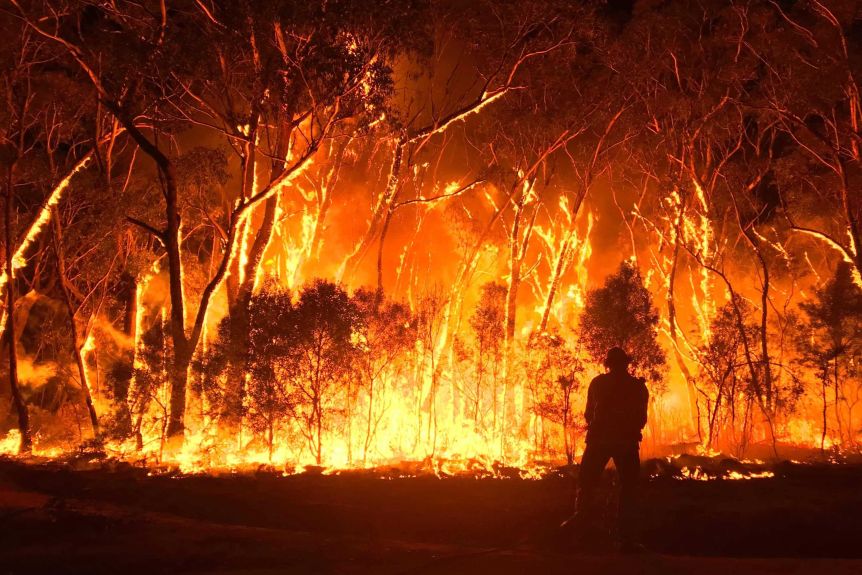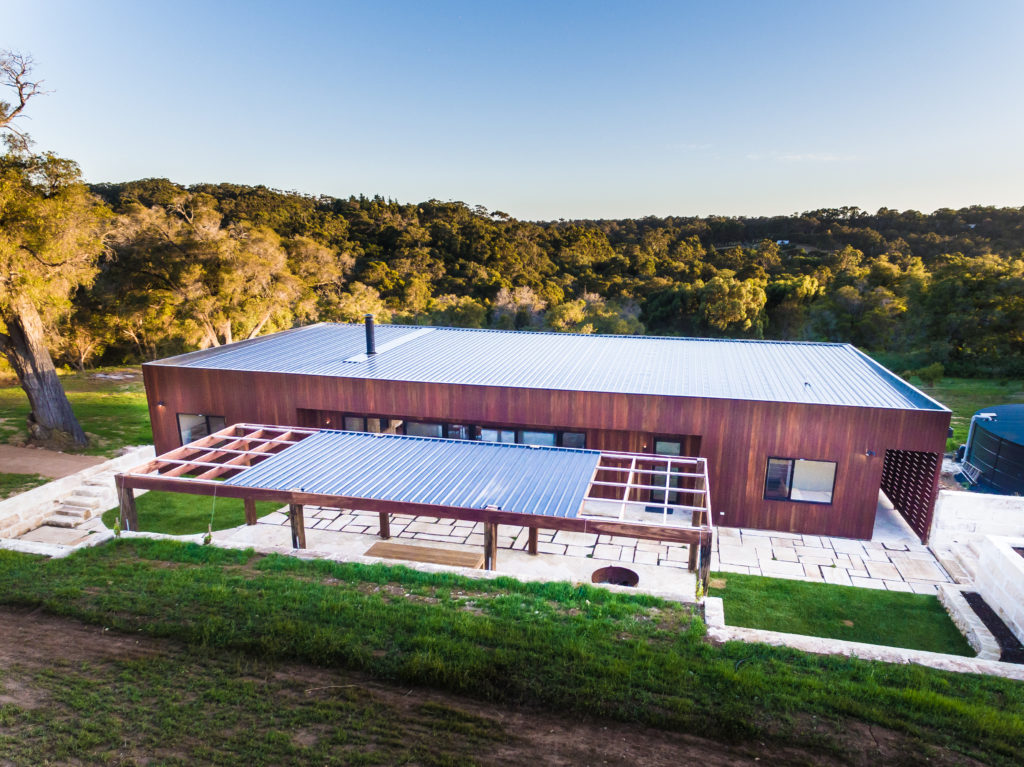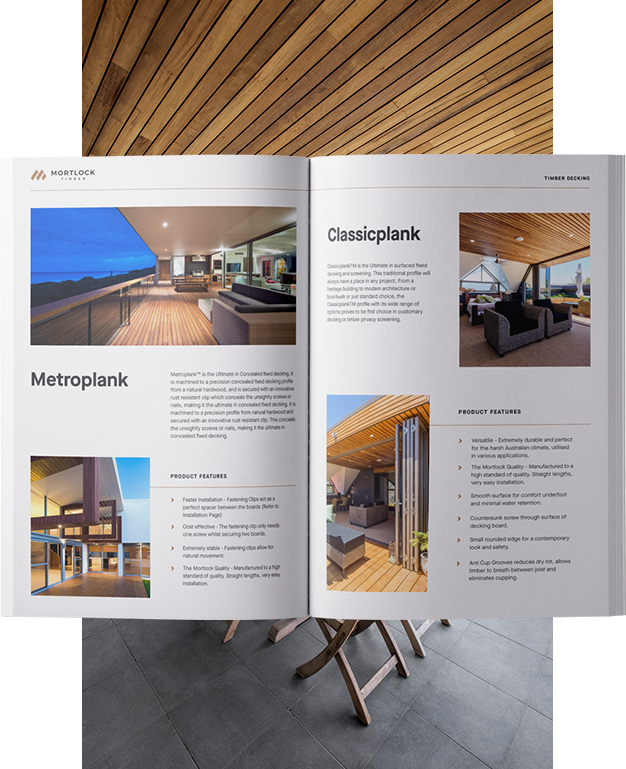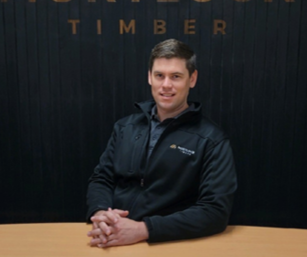Timber Cladding for Buildings In Bushfire Areas

Get to know:
- Achieving BAL 29 with Mortlock Timber
- What does a BAL number mean?
- What timbers can you use in bushfire areas?
Bushfires are occurring more frequently across the globe. According to the Climate Council, communities in our own backyard face an increasing risk with bushfire conditions being significantly worse than in the past. The devastating effects of bushfires raise the question: how can we design and build homes to minimise the risk?
Timber cladding is a popular choice for home designs in Australia, particularly in rural settings where the risk of bushfires is higher. But is building with timber a bushfire risk? Can you still use timber cladding without compromising protection?
According to Australian Standards, timber cladding can be used in building designs for bushfire prone areas, including high risk zones. To minimise the risks and meet the requirements, it’s crucial to select the right timber species and cladding profiles.
This article provides an overview of the requirements for using timber cladding in bushfire prone areas, as well as a guide to the best timber cladding to meet BAL requirements. For project-specific advice about selecting bushfire resistant timber cladding, speak to the team at Mortlock Timber.
BUILDING IN BUSHFIRE ZONES

When designing and building in bushfire risk zones, the building needs to effectively resist damage from radiant heat, keep embers out and resist damage from flames. The first step is an assessment of the property to determine the level of bushfire risk or the bushfire attack level (BAL).
What does a BAL number mean?
BAL is a means of measuring the severity of a building’s potential exposure to ember attack, radiant heat, and direct flame contact. It is measured in increments of radiant heat from a bushfire, through kilowatts per square metre (kW/m²).
Determining the level of risk for a property requires an assessment from an accredited BAL assessor in your local area. Plans, material specifications, construction documents and building methods need to be in accord with the bushfire attack level listed in that assessment.
The Building Code of Australia is the primary standard for all new buildings and new building work to existing homes. AS3959-2018 sets out the minimum design and construction requirements, including bushfire requirements, for homes in bushfire prone areas.
THE 6 BUSHFIRE ATTACK LEVEL RATINGS
- BAL–LOW: Very low risk. Standard construction materials and methods, including timber framing and cladding materials can be used. These sites have no special requirements as there is such a low risk of bushfire attack.
- BAL–12.5: Low risk. Some possibility of ember attack has been identified from looking at the closeness of vegetation, the site itself and local conditions with construction elements expected to be exposed to a radiant heat flux not greater than 12.5 kilowatts per square metre (kW/m2).
- BAL–19: Moderate risk. Sites identified as having an increasing level of predicted ember attack and burning debris ignited by wind-borne embers together with an increasing radiant heat flux, not greater than 19 kW/m2.
- BAL–29: High risk. Increasing level of chance of ember attack and burning debris ignited by wind-borne embers, together with an increasing radiant heat flux not greater than 29 kW/m2.
- BAL–40: Very high risk. Further possibility of ember attack and burning debris ignited by wind-borne embers; together with an increasing radiant heat flux, not greater than 40 kW/m2, and an increased likelihood of exposure to bushfire flames.
- BAL–FZ: Extreme risk. A home with this BAL has a predicted direct exposure risk to flames from a fire front, ember attack and a radiant heat flux greater than 40 kW/m2.
The information above on the six levels is based on Appendix G of AS 3959 and sourced from Wood Solutions Guide #04. The Australian Standard AS 3959–2018 Construction of buildings in bushfire-prone areas and Wood Solutions Building with Timber in Bushfire-prone Areas Technical Design Guide provide an extensive guide to help architects, designers, builders and owners to understand the Standard and what is required for each of the Bushfire Attack Level (BAL) areas.
What BAL rating can Mortlock Timber help you achieve?
The species offered at Mortlock Timber that can achieve BAL 29 are spotted gum, blackbutt and ironbark.
These three timber species fall under the external walls (5.4) and decking (6.73.3) sections of the Construction of Buildings in Bushfire prone areas: AS 3959:2018. Stating that “a timber species, as specified in Paragraph E1 and listen in Table e1, Appendix E.”
As shown below, spotted gum falls under a species that adheres with the requires specifications. Mortlock Timber has ensured that spotted gum and charred spotted gum meet BAL 29.


According to AS 3959-2018 “Construction of buildings in bushfire-prone areas,” timber used for cladding at BAL-19 must have a minimum density of 680 kg/m³. Timber species that is in solid with a density of 750 kg/m3 or greater at 12% moisture content is suitable for construction where specified for BAL- 29.
The construction requirements specified for a particular BAL shall be acceptable for a lower level.
FIRE RESISTANT TIMBER SPECIES
Although many timbers burn easily, some timbers are naturally fire resistant. High density timbers tend to have a higher resistance to ignition and burn at a slower rate. What’s more, bushfire resistant timbers tend to burn in a predictable manner. This predictability can assist with improving safety during the building design process.
Common fire resistant timber species include:
- Pacific Teak
- Spotted Gum
- Ironbark
- Blackbutt
- Irongum
- Jarrah
WHAT TIMBERS CAN I USE IN BAL RATED AREAS?
The following timber species are appropriate for external cladding in BAL areas:
- BAL LOW – Pacific Teak, Spotted Gum, Ironbark, Blackbutt, Jarrah
- BAL 12.5 – Pacific Teak, Spotted Gum, Ironbark, Blackbutt, Jarrah, Irongum
- BAL 19 – Pacific Teak, Spotted Gum, Ironbark, Blackbutt, Jarrah, Irongum
- BAL 29 – Spotted Gum, Ironbark, Blackbutt
Mortlock Timber does not offer any timber products that comply with the BAL FZ (Bushfire Attack Level Flame Zone) rating. This highest bushfire rating requires non-combustible materials due to extreme risks from direct flame contact and radiant heat exceeding 40 kW/m², making timber unsuitable for such conditions (Bushfire Control) (Lysaght.com) (Australian Fire Control).
BUSHFIRE RESISTANT TIMBER CLADDING AT MORTLOCK
Mortlock Timber supplies a wide range of bushfire resistant timber cladding products. We’ve supported designers and builders constructing new buildings in bushfire prone areas to meet Australian Standards while maintaining the aesthetic quality of the construction.
Both our Trendplank Timber Cladding and Shou Sugi Ban range are suitable for use in bushfire-rated areas.
- Trendplank Timber Cladding – our popular concealed fixed timber cladding is appropriate for external walls, ceilings and internal feature walls. Expertly designed to allow for natural timber movement while maximising longevity.
- Shou Sugi Ban Timber Cladding – charred timber cladding, manufactured in-house at Mortlock Timber using Jarrah, Irongum or spotted gum. A bold, carbon black finish with reduced maintenance requirements. That can achieve BAL 29 rating when spotted gum is specified.
Does Shou Sugi Ban or charring the timber increase the fire rating of the timber?
Charring the timber surface does not conclusively increase the fire rating of the timber. After conducting lab testing on this matter, the results showed that charring timber does not change the fire properties of the wood.
GET IN TOUCH
For more information about our bushfire resistant timber cladding options, download our product and pricing guide. Or get in touch with the Mortlock team today on 1800 870 452.
View our pricing and product guide

We are committed to bringing you timber products that add value and endure for years to come, even in heavy traffic and harsh weather conditions. We understand the value of efficiency when it comes to installation and keeping hardwood timber costs down. That’s why we’ve spent decades perfecting our designs to make them easier to handle, less wasteful and more efficient to install. This efficiency allows us to offer you premier products that are more cost-effective so that you can experience greater savings on timber wall costs, timber ceiling costs, timber cladding costs and timber decking costs.
Download our Pricing and Product Guide for our complete hardwood timber price list including timber decking prices, timber wall prices, timber ceiling prices and timber cladding prices.
